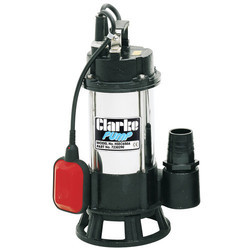-
All Products
- Power Tools
- Air Compressors
- Air Tools & Accessories
- Bicycle Tools & Accessories
- Camping & Caravanning
- Cast Iron & Steel Stoves & Accessories
- Cleaning
- Clothing & Footwear
- Construction
- Drill & Screwdriver Bits
- Electrical & Electronic
- Engines, Electric Motors
- Fans, Air Conditioners & Ventilation
- Garage Equipment
- Gardening & Outdoor
- Generators
- Hand Tools
- Health & Safety
- Heaters - Electric, Gas, Diesel
- Air Compressors
- Wood Burning Stoves
-
Garage Equipment
Workshop Cranes & Engine Stands
Vehicle Battery Chargers
Engine Starters/Chargers
Jump Starts
Motorcycle Lifts, Stands & Dollys
Air Compressors
Grease Guns, Cartridges & Dispensers
Trolley Jacks & Car Jacks
-
Tool Chests & Storage
Shelving and Racking
All Tool Chests and Cabinets
Modular Workshop Systems
Clarke Mechanics' Tool Chest Range
Clarke Professional Tool Chests
Clarke Premium Tool Chests
Clarke Heavy Duty Tool Chests
Clarke Heavy Duty+ Tool Chests
- Heaters
-
Wood Working
Table Saws & Workshop Saws
Compound Mitre Saws & Mitre Saws
Power Saw Stands
Bandsaws
Bench Belt & Disc Sanders
Planer Thicknessers
Dust Extractors
Dust Extractor Hoses & Accessories
- Generators
- Water Pumps
-
Power Tools
Cordless Drills & Drill/Drivers
Impact Wrenches
Impact Drivers
Mains Power Drills (Non SDS)
Mains Powered SDS, SDS+ and SDS MAX Drills
Cordless SDS & SDS+ Drills
Cordless Screwdrivers
Magnetic Drilling Systems
-
Hand Tools
Tool Kit Sets
Allen, Hex, Torx and Star Key Sets
Allen, Hex, Torx and Star Keys - Individual
Chisels & Punches
Spring Clamps
Crimping Tools & Sets
Files
Glass Cutters
-
Welding
MIG Welders
Arc/Tig Welders
Arc Welders
Plasma Cutters
Spot Welders
Petrol & Diesel Driven Welders
Welding Headshields & Goggles
Welding PPE
- Pressure Washers
Water Pump Buyer's Guide
Water Pump Buyer's Guide
There are a wide variety of water pumps on the market. Each pump is designed with a specific task in mind. Whether that be central heating or swimming pool, pond or sewage. There are a number of factors which should be taken into consideration when picking the ideal pump for your job.
What type of water is being pumped?
The primary factor is the type of water which is to be pumped. Please refer to the table below to find the type of pump most suited to your application:
|
Type of water
|
Machine Mart’s solution
|
| For a domestic water supply? | Clarke CPE, CBM, CBB and ranges and CSD3 |
| Central heating ? | Clark CHP55 |
| Swimming pool? | Clarke SPP range |
| Ponds and waterfalls? | Hozelock pond pumps or Oase |
| Clean? | Clarke Hippo, CSE range |
| Salt or fresh water? | Salt water – Clarke CSW1A |
| Containing floating solids? | Clarke GSE and ISP ranges |
| Sewage? | Clarke ISP range and HSEC400A |
| Trash and small stones | Clarke CHS or CHF ranges |
Where does the water have to be pumped to/from?
- Can the pump be submerged in the water? Many Clarke pumps are submersible.
- Do you want the pump on dry land with a hose picking up the liquid? Choose a model with a suction hose facility.
Will the pump be in continuous operation or for occasional use?
- For continuous use see our full range of GSE Pumps.
- Do you need the pump to stop/start automatically? Buy a pump with a float switch or fit one.
How will you power the pump?
- Electricity? Use a Clarke Submersible pumps for dirty or clean water
- Petrol or Diesel? Use one of our Petrol & Diesel powered pumps
- By power drill? Use a drill powered pump
- By hand? Cast iron garden pumps
When looking at the specification of a water pump, there are several figures which you should take into account, to make an informed choice.
- Maximum head – shown in metres – lets you know the maximum height to which water can be raised above the pump. The size and length of output hose and type of liquid will affect this.
- Maximum output rate – shown in litres per minute or hour (l/min or l/hr)- this tells you the maximum output flow rate of the pump, the head will also affect the output flow rate.
- Outlet size – usually shown in inches, indicates the maximum hose bore which will fit on the pump. The size of output hose will affect the flow rate and head figures.
- Motor Watts – the power consumed by the pump.
- Voltage – the electrical supply required for the pump Machine Mart sells 240V, 110V and 12V pumps
Other words you will see in association with pumps - Non-Return Valve – Stops the pumped water flowing or siphoning back down the pipe if the pump stops.
- Float Switch - Switches the pump on and off at pre-determined limits.
- Filter – Stops unsuitable objects from entering pump.
- Submersible – May be entirely placed in the water to be pumped.
- Anti-Silt Base - Stops a submersible pump sucking up too much silt and becoming blocked.
- Self-Priming – Pump and hoses do not need to be full of water before switching on.
- Overload Protection – Protects the pump from burning out through working too hard.
- Brass Foot Valve/filter – Combined filter and non-return valve.

Submersible Pump - dirty & clean water

Engine Driven Pump

Booster & Centrifugal Water Pumps

Sewage Pumps